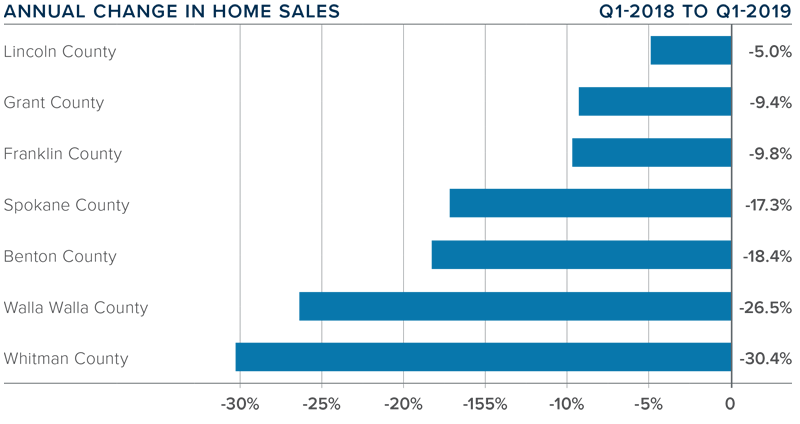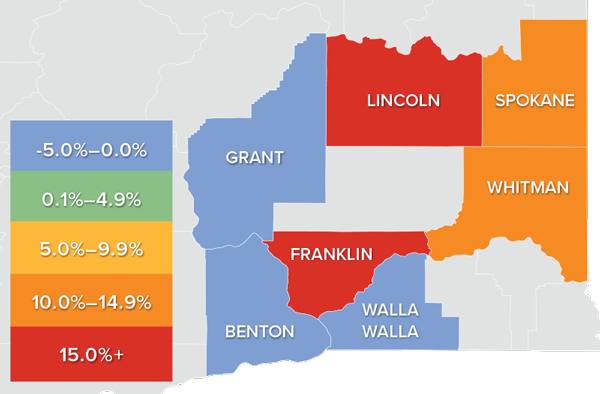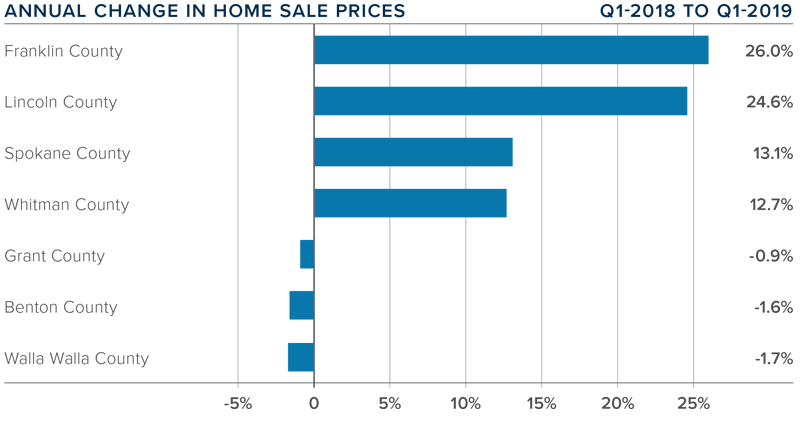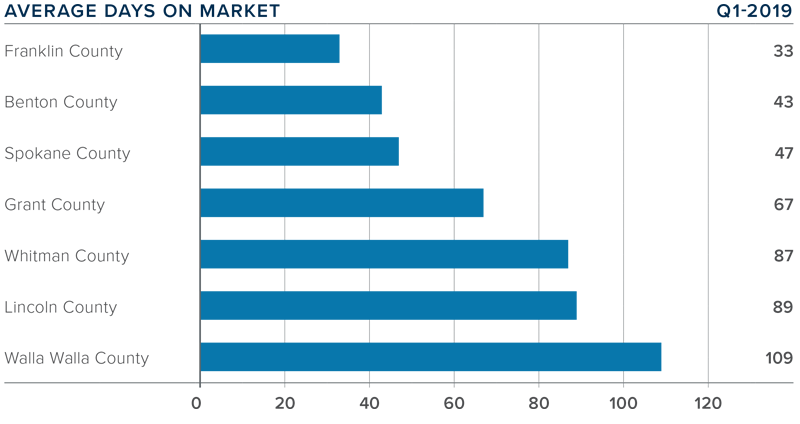The following analysis of the Eastern Washington real estate market is provided by Windermere Real Estate Chief Economist Matthew Gardner. We hope that this information may assist you with making better-informed real estate decisions. For further information about the housing market in your area, please don’t hesitate to contact your Windermere agent.
ECONOMIC OVERVIEW
Washington State employment slowed to an annual growth rate of 1.7% — a level not seen since 2012 — and continues a trend of slowing that started in the summer of 2018. Over the past 12 months, the state added 56,100 new jobs. Month-over-month, all metropolitan areas in the state either saw the number of jobs contract or remain at their existing levels. This is a little unusual and may be due to the state re-benchmarking their data. As such, I am not overly concerned about the numbers but will be watching to see if this trend continues as we move through the spring months.
The state unemployment rate was 4.5%, marginally below the 4.6% level a year ago. My latest economic forecast suggests that statewide job growth in 2019 will be positive but is expected to slow. We should see an additional 84,000 new jobs, which would be a year-over-year increase of 2.2%.
Eastern Washington added a very impressive 20,640 jobs over the past 12 months, representing an annual growth rate of 4.6%. Even with this significant amount of job formation, however, the unemployment rate rose to 6.8%. This is simply a function of a growing labor force, which rose by over 22,000 year-over-year, and not something to be concerned about.
HOME SALES
- Home sales throughout Eastern Washington slowed further in the first quarter of the year, with total sales down 17.3% over the same quarter in 2018 to 2,131 units.
- Pending home sales were also lower, with the number of homes going under contract down 11% compared to the final quarter of 2018. This suggests that second-quarter closings may also be lower.
- Year-over-year, home sales fell in all counties, with the greatest drops in Whitman and Walla Walla counties.
- Interestingly, the number of homes for sale was 9.5% lower than a year ago. This may be due to the inclement weather early in the quarter. I will be watching to see if this is a persistent trend or whether we will see a pick up in the number of homes for sale as we move into the spring. I think the latter is more likely.

HOME PRICES
 Year-over-year, the average home price in Eastern Washington rose by a significant 8.5% to $271,427. Price growth started to slow in the third quarter but remains remarkably robust.
Year-over-year, the average home price in Eastern Washington rose by a significant 8.5% to $271,427. Price growth started to slow in the third quarter but remains remarkably robust.- Low inventory levels remain the most significant hurdle to many home buyers. I had expected more homes to come on the market in the early spring months, but that was not the case. Notably, the average number of listings is 9.5% lower than the same period a year ago.
- Prices rose in four of the seven counties contained in this report, with modest drops in three. Franklin County took over the number one spot, with an annual price increase of 26%.
- The takeaway is that average home-price growth in Eastern Washington remains well above the long-term average.

DAYS ON MARKET
- The average time it took to sell a home in Eastern Washington in the first quarter of 2019 was 68 days.
- Days on market dropped by ten days compared to the first quarter of 2018.
- Every county other than Franklin (+8 days) and Benton (+10 days) saw the time it took to sell a home drop compared to the same quarter in 2018.
- It took five more days to sell a home in the first quarter than it did in the fourth quarter of last year, but this is not significant.

CONCLUSIONS
 This speedometer reflects the state of the region’s real estate market using housing inventory, price gains, home sales, interest rates, and larger economic factors.
This speedometer reflects the state of the region’s real estate market using housing inventory, price gains, home sales, interest rates, and larger economic factors.
The number of homes for sale is still well below normal levels, causing housing markets throughout Eastern Washington to remain very tight. That said, home sales were down, and I believe affordability issues may be forming. It is likely that we will eventually see home price growth start to move back to the long-term average. As such, I am leaving the needle in the same position as last quarter.
 As Chief Economist for Windermere Real Estate, Matthew Gardner is responsible for analyzing and interpreting economic data and its impact on the real estate market on both a local and national level. Matthew has over 30 years of professional experience both in the U.S. and U.K.
As Chief Economist for Windermere Real Estate, Matthew Gardner is responsible for analyzing and interpreting economic data and its impact on the real estate market on both a local and national level. Matthew has over 30 years of professional experience both in the U.S. and U.K.
In addition to his day-to-day responsibilities, Matthew sits on the Washington State Governors Council of Economic Advisors; chairs the Board of Trustees at the Washington Center for Real Estate Research at the University of Washington; and is an Advisory Board Member at the Runstad Center for Real Estate Studies at the University of Washington where he also lectures in real estate economics.
 Facebook
Facebook
 X
X
 Pinterest
Pinterest
 Copy Link
Copy Link



